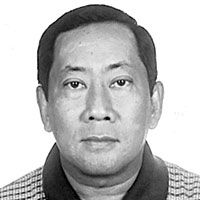Bonifacio Day reminds us of ugly Pinoy politics!

I’m sure that you may have already read in the news reports that Pres. Benigno “PNoy” Aquino, III called upon DPWH to do a simultaneous technical study on the road widening and road traffic in the two flyover areas. This is proof that Pres. PNoy really doesn’t know the issues involved in Cebu, otherwise he would have acted for or against the flyover. This is the exact question we threw at then Presidential candidate Nonoy Aquino at the CICC hosted by the Cebu Business Club (CBC) about infrastructure development for Cebu and he merely retorted that he would consult the people.
This is the problem when a political ally goes to the President and talks to him about local concerns, which the President has no idea about. So the big question is, what if the DPWH sends the President a report that the widening of the road is better and funds would be given by the President based on that study, don’t you think it would not end the howl coming from the Madres of the Asilo dela Milagrosa? At least with the flyover, Rep. Cutie del Mar promised that their fence would not be touched.
Meanwhile, Mayor Michael Rama our current chairman for the Regional Development Council (RDC-7) included the unendorsed report by the Technical Working Group (which the Infrastructure Development Committee (IDC) did not forward to the Full Council) during his opening remarks. Of course, he was out of line, but then, that’s what most politicians do, ram home their agendas even to the consternation of others. Indeed, this has never been done in the RDC and I hope Mayor Rama doesn’t do this again.
* * *
Today is the 148th birth anniversary of a highly-controversial figure in Philippine history. He is no other than Andres Bonifacio, the founder or the “Supremo” of the Katipunan whom other historians consider as the first President of the Philippines, which is often called the “Tagalog Republic.” Hence, it is considered “unofficial.” Bonifacio was succeeded by Gen. Emilio Aguinaldo, but the Tagalog Republic failed to take off. After all, the Spaniards were still in control of the Philippines.
After the Tejeros Convention, Gen. Aguinaldo got himself elected as President of the Philippine Republic. But then who had Andres Bonifacio killed? Well, historians seem to agree that Bonifacio was subjected to a kangaroo court created by Pres. Aguinaldo. So was that execution legal? Personally I don’t think so! As I’ve written so many times before when Gen. Aguinaldo raised the Philippine Flag in his residence in Kawit, Cavite, not a single foreign nation recognized his effort. So how could he have legally tried Bonifacio? Granted even if his presidency was legal, the trial of Bonifacio was far from fair and he was summarily executed.
This is why, in the order of things, Gen. Emilio Aguinaldo could not claim the title of being a Filipino hero because his claim to the presidency was through the killing of his political rival. But then, by Presidential fiat, Pres. Diosdado Macapagal changed Philippine history by saying that Philippine Independence should be celebrated on the day that Gen. Aguinaldo waved the flag in his home. In my generation, Philippine Independence was granted by the Americans on July 4, 1946.
How I wish our readers would go to their computers and Google on the life of Andres Bonifacio so they would know how things were during the days when Filipinos wanted to challenge the rule of the Spaniards. But if you were involved in Spanish intelligence at that time, you’d probably laugh at the Filipinos for their infighting. Andres Bonifacio founded the Katipunan to fight the Spaniards and ended up being killed by his own political rival. No doubt, Andres Bonifacio was a serious threat to the leadership of Gen. Aguinaldo, who, by the way, was an (just look at his huge palatial residence in Kawit) aristocrat, unlike Bonifacio who was born poor.
Come to think of it, a hundred plus years ago, when Filipinos tried to create their own system of governance, the politicians ended up killing each other and those politicos were all from the Island of Luzon. It’s no wonder that the state of Philippine politics is so fragmented even today because the Filipino psyche is such that everyone wants to be on top and he would even kill any rivals who might threaten his leadership. This is especially true today and it is also true even to Filipinos living abroad.
Just go to Los Angeles, California and see for yourself how many Filipino organizations are there. There must be several of them. More often than not, Filipinos group themselves through ethnic lines, from Ilocanos, Ilonggos, Tagalogs, Cebuanos, Waray or Bicolanos, etc. etc. But even within these ethnic lines, they are also broken into different groups, either from the towns of each province or regions. This so-called Filipino style of politics is so divisive.
* * *
Email: [email protected]
- Latest
- Trending




























